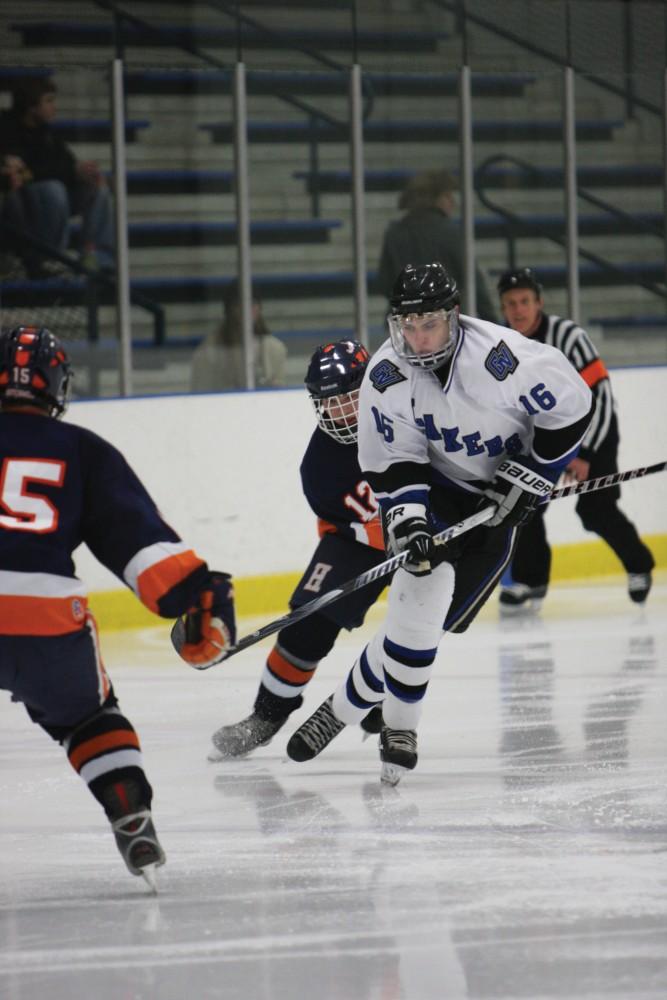Club hockey programs demonstrate GV unity

GVL / Eric Coulter GVSU Mens Hockey Bench
Feb 16, 2012
As the Grand Valley State University Division II and Division III hockey club teams enter the final month of their season, the Lakers continue to aid each other in unified attempts to bring victory to GVSU.
The Division III team (10-11 this season) was formed four years ago as a sort of feeder program for the Division II team (26-5-1 this season). The Division III team also gives new talent a chance to improve before joining the big leagues in Division II.
“We get a lot of very talented players coming out of high school, but there is not enough room on the Division II team,” said Division II head coach Mike Forbes. “We can’t take everybody, so we cut them and when room opens up on our roster and their abilities improve by playing for D-III for a year or two, we try to move them up as space is available.”
This year, the Division II Lakers have recruited a defender, sophomore Josh Light, and a goaltender, junior Scott Tiefenthal, from the Division III squad.
“Transitioning to D-II was definitely a positive thing,” Tiefenthal said. “The guys really make you feel welcome. There aren’t any crossovers on the ice, but I knew more than half of the team before I made the transition, we all hang out on the weekends. D-II is definitely a lot faster, the level of play is a lot higher.”
While Division II feels the benefit of additional players, the Division III Lakers welcome the chance to engage in a higher level of competition and participate in Nationals.
“My teams are always much younger, this year I think we had 15 freshmen,” said Division III coach Todd Charlesworth. “Partnering with D-II is a great opportunity for the kids to play at a higher level. We piggy-back off of them, and when they won at nationals last year, we had several kids that were able to do that with them. They make our program look stronger.”
One of the biggest problems that the teams face is a lack of retention and the effect of this has taken its toll, particularly on the Division III team.
“A lack of retention creates challenges for both teams,” Forbes said. “If you don’t have returning players, you don’t have players improving and you have a larger influx of freshman. Maybe you have to rely on lower quality players in that situation, as opposed to developing them over three to four years. You lose out on opportunities that way, and hopefully we’ll see those trends not continue.”
The Division II Lakers will face off against Ferris State University this Friday before taking a brief break in anticipation of hosting the Greater Midwest Hockey League (GMHL) Tournament during the first weekend of March.
Coming off a 4-2 loss to Hope College, the team is looking to fix their mistakes and prepare for the remainder of their season.
“It was a mental breakdown, as opposed to physical,” Forbes said. “We’re going to remind the guys that they have to work hard and show up and be ready to play. Hopefully we can put ourselves in a position where we can be competitive once we go to the national tournament.”

























